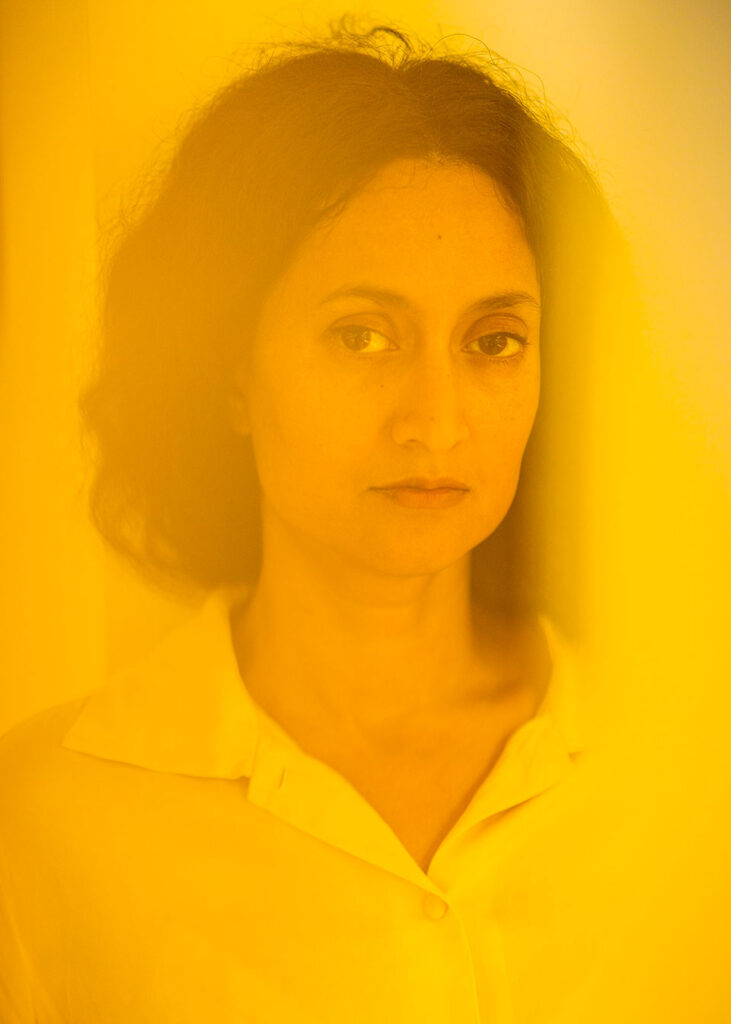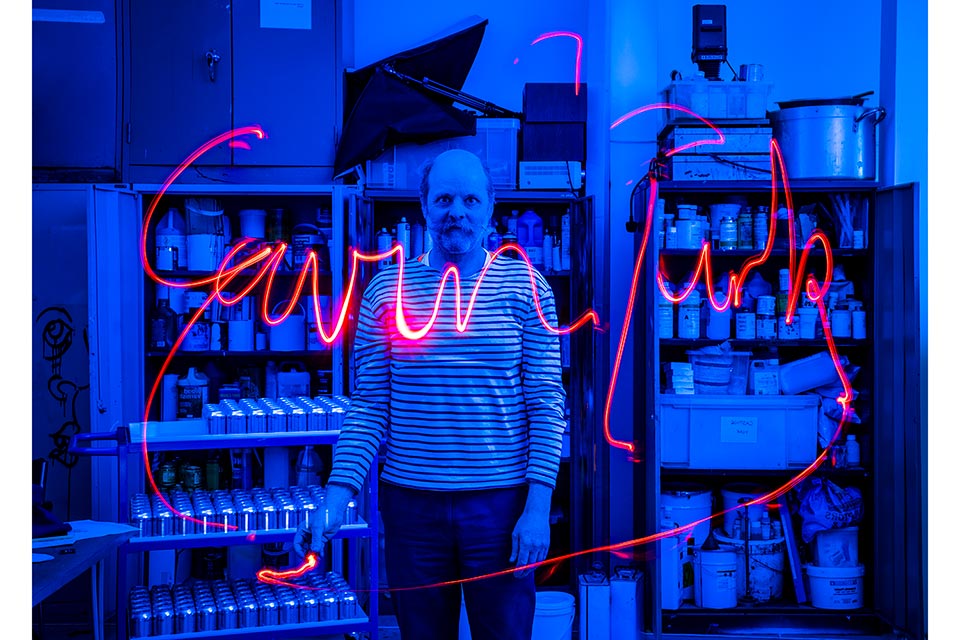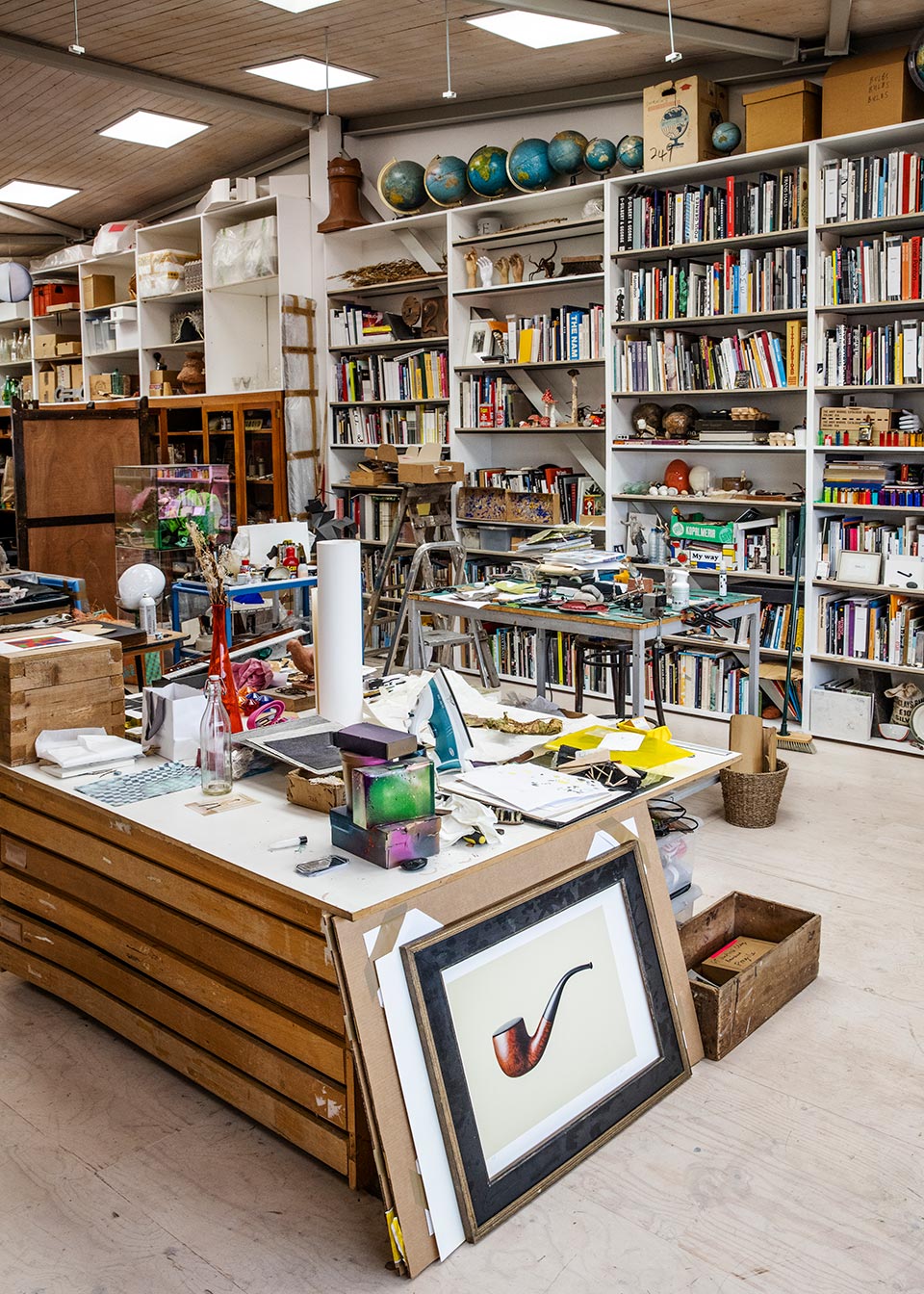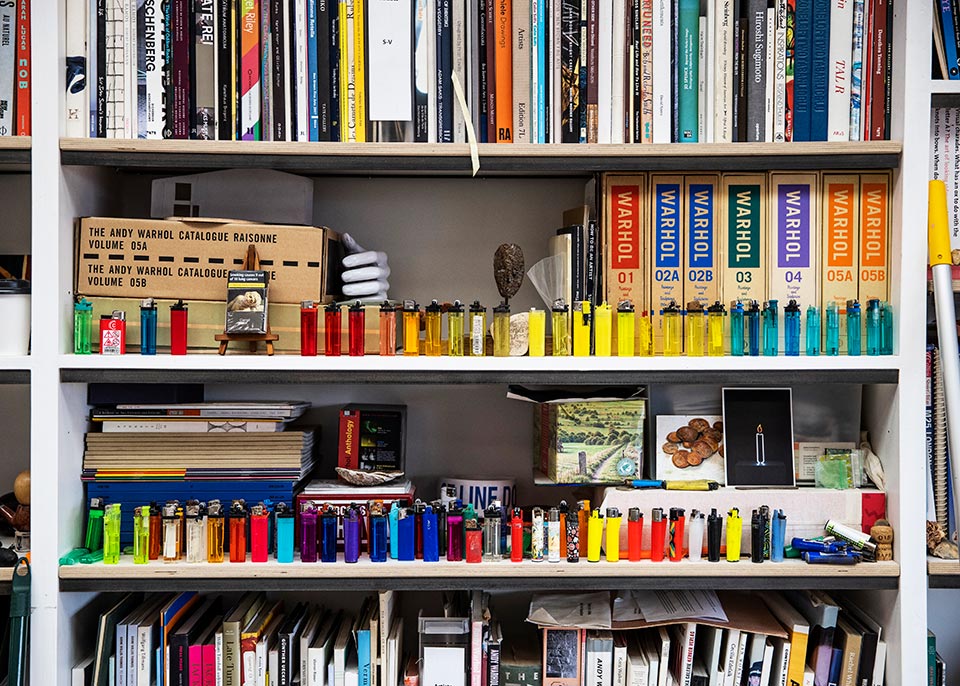The art of collaboration and relinquishing creative control
I’ve been working on my latest project Expression: Portraits of Artists for two years but it’s been an idea I’ve been exploring creatively for the last decade.
The project features visually striking photographic portraits of celebrated contemporary artists: Yarli Allison, Rana Begum, Gordon Cheung, Adam Chodzko, Ann Christopher, Marie Harnett, Bruce McLean, Cornelia Parker, and Gavin Turk. Also featured are Sussex-based artists Stig Evans, Richard Graville, James William Murray, and Jake Wood-Evans. The ongoing project involves elements of unique collaboration with many of the artists involved, inviting each artist to make their mark on the final piece and truly make the portrait their own.
The aim of the project is to celebrate the individuality and artistry of these talented people. Often artists are known for their works, but I wanted to tell the story of the people behind the artworks and capture their creative process.
With traditional approaches to portraiture, the sitter is typically invited to a photographer’s studio and the photographer directs the shoot. With this project however, it’s been more of a two-way dialogue with each artist about how they would like to be photographed, and inviting them to collaborate on the portraits by relinquishing creative control. This has challenged my standard process and opened my eyes to what that creative collaboration could achieve.
Yarli Allison (she/they) (b.1988) is a Canadian-born, Hong Kongese art-worker based between the UK and Paris with an interdisciplinary approach that traverses sculpture, installation, CGI (VR/AR/3D modeling/game), moving images, drawings, poetry, tattooing, and performances. This portrait was taken at her studio in London and she is photographed wearing one of her wearable pieces which references her sculptural and performative works. In this image, we worked together to create the mise-en-scène featuring a series of props, clothing, and headgear.
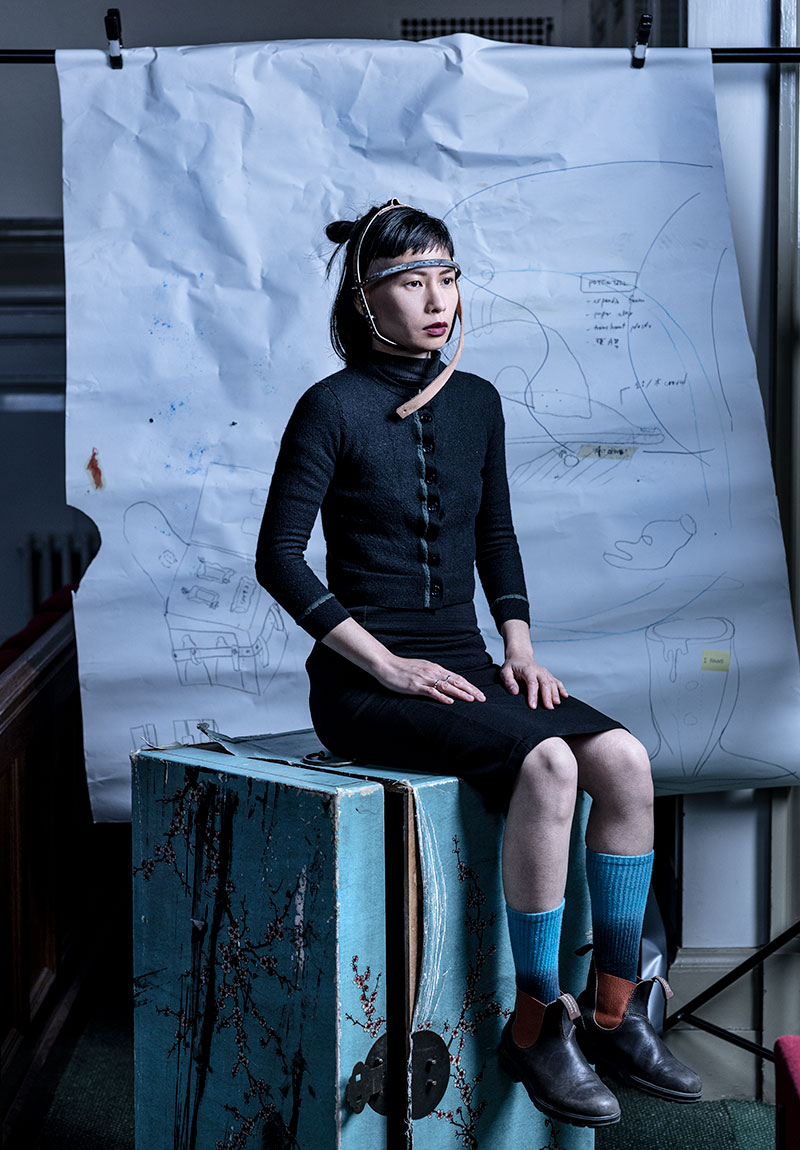
Gordon Cheung, born 1975 in London to Chinese parents, has developed an innovative approach to making art, which blurs virtual and actual reality to reflect on the existential questions of what it means to be human in civilisations with histories written by victors. Cheung raises questions and critiques the effects of global capitalism, and its underlying mechanisms of power on our perception of identity, territory, and sense of belonging. These narratives are refracted through the prisms of culture, mythology, religion, and politics into dreamlike spaces of urban surreal worlds that are rooted in his in-between identity. I took this portrait at Cheung’s London studio. During post-production, Cheung added a collaborative element – he applied his signature digital glitch – an algorithmic blur that distorts the pixels – inviting the viewer to question time, space, and reality.

Stig Evans (b.1964) is a painter and public artist based in Brighton. Evans’ work investigates concepts of visibility and perception. He uses colour to explore our visual acuity, how we perceive it, respond to it, represent it, and by its historical, chemical and physical and immaterial nature. He paints with an airbrush, building up many layers of sprayed colour creating chromatic colour experiences where boundaries, borders and chroma subtly move and shift in front of the eye. I shot this portrait on black and white film using a Hasselblad medium format camera. The background of antique pigment bottles was constructed by Evans in his Brighton studio. I hand-produced the silver gelatine fibre print in a darkroom which was then hand-coloured by Evans. He also applied 21,915 “strikes” in pencil, each strike representing a day of his life.
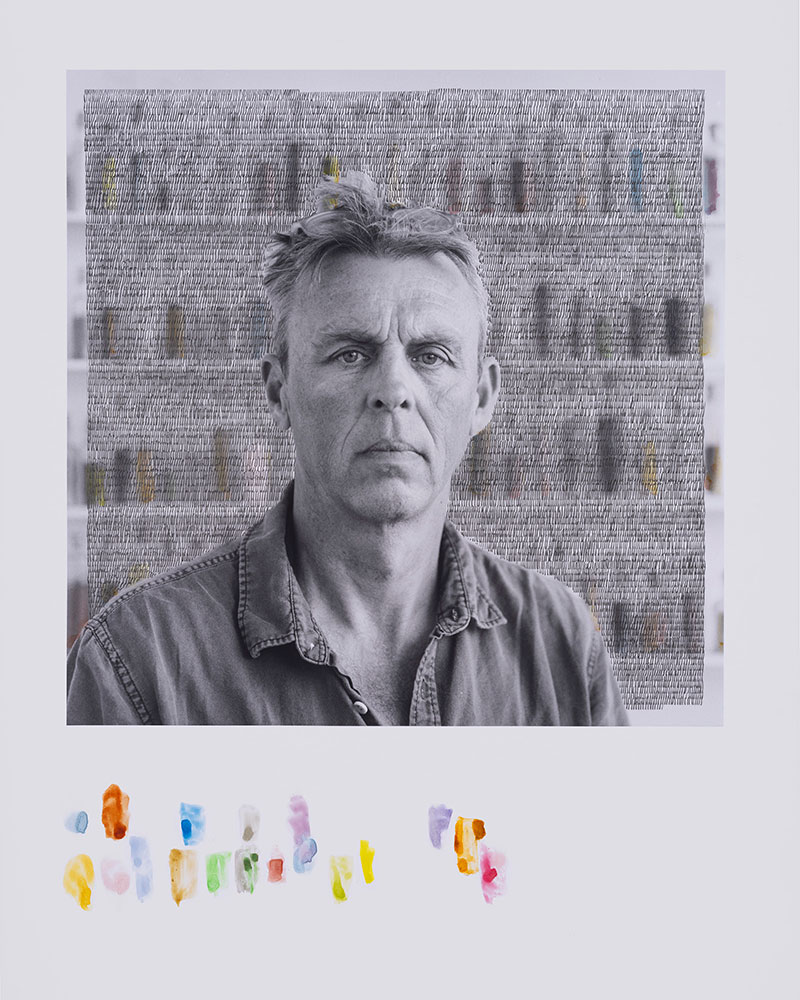
Jake Wood-Evans (b. 1980) is also based in Sussex. In an age dominated by screens and pixelated images, Jake Wood-Evans’ work feels like a welcome antidote. Drawing on the legacies of Old Masters, his intention is to capture the essence of these historic works without replicating them, depicting familiar, yet obscured subject matter. Creating ethereal images that are both unsettling and beautiful, Wood-Evans’ powerful use of light emerges from a loose and instinctive application of paint. His oil paintings shimmer with luminous and intense layers of colour as bold marks, dripping oils and scored surfaces sit in company with fine, delicate detail. The portraits of Wood-Evans were shot on black and white film using an Ebony 5×4” large format camera in Sussex studio. I hand-printed silver gelatine fibre prints which were then left on the floor of Wood-Evans’ studio for several months. They collected paint marks, drips, and textures from the artist at work. The collaborative portraits explore aspects of time as the prints develop their own history of marks.
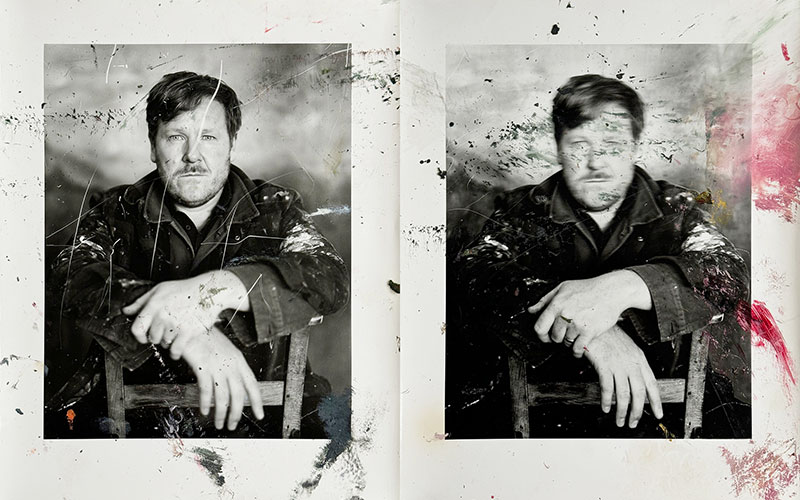
Gavin Turk (b.1967) is a British-born, internationally renowned artist, who lives and works in London. He has pioneered many forms of contemporary British sculpture, including the painted bronze, the waxwork, the recycled art-historical icons, and the use of rubbish in art. Turk’s installations and sculptures deal with issues of authorship, authenticity, and identity. Concerned with the ‘myth’ of the artist and ontological questioning. Turk was included in several YBA exhibitions and his work is held within public and private collections worldwide, including the TATE, Museum of Modern Art New York, Museum MMK Für Moderne Kunst, Musée Magritte Museum, and San Francisco Museum of Modern Art. I shot this performance-style portrait of Turk in his London studio as he writes his signature in the air. It pays homage to Turk’s earlier works including Multiple Signature (1999) and Jazzz Signature (2009), while referencing Gjon Mili’s photographs of Picasso drawing with light, taken in 1949. The use of red and blue references Turk’s pieces I (2015) and That (2015).
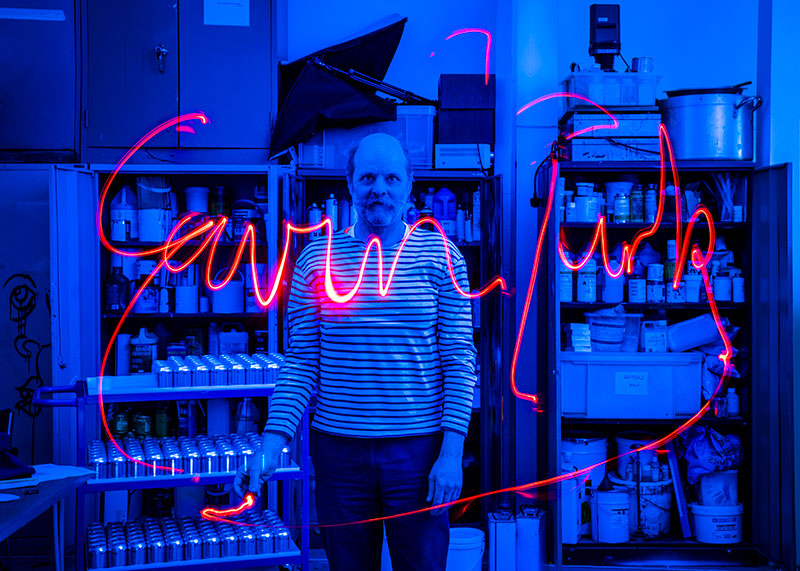
Bruce McLean (b. 1944) is an acclaimed Scottish sculptor, filmmaker, and painter. He studied at the Glasgow School of Art and at Saint Martin’s School of Art, where he and others rebelled against what appeared to be the formalist academicism of his teachers. In 1965, he abandoned conventional studio production in favour of impermanent sculptures using materials such as water, along with performances of a generally satirical nature directed against the art world. From the mid-1970s, McLean turned increasingly to painting, sculpture, and film work and won the John Moores Painting Prize in 1985. This collaborative portrait is really significant to me as it initiated the idea for the Expression project. The blank canvases seen in the background inspired the idea to add collaborative elements and I invited McLean to apply paint onto the print. McLean added a painting of a sculpture of a jug to the final photographic print. The portrait was shot on a Hasselblad medium format camera using available daylight.

Richard Boll’s photography exhibition Expression: Portraits of Artists will open on the 4th of October at The Regency Town House in Brighton & Hove.
Limited edition prints of the images in the show will be available from the 4th of October at richardboll.art
Event details:
Location: The Regency Town House, 13 Brunswick Square, Brighton and Hove, BN3 1
Exhibition opening times: Tuesday – Friday 11am – 4pm
Saturday & Sunday 11am – 5pm
Monday closed
Artist Talk: Saturday 12th October 3pm. Tickets are free but limited: Eventbrite
About Photo Fringe
The biennial, open-platform Photo Fringe festival runs from the 4th of October to the 14th of November with exhibitions and events taking place online and in venues across its home city of Brighton & Hove and along the south coast from Newhaven to Portsmouth. The programme presents a vibrant mix of lens-based work from emerging practitioners and well-established names, in galleries, cafés, pop-up venues, outdoor installations, and other extraordinary spaces. photofringe.org


